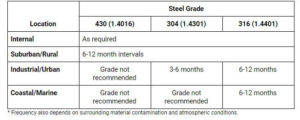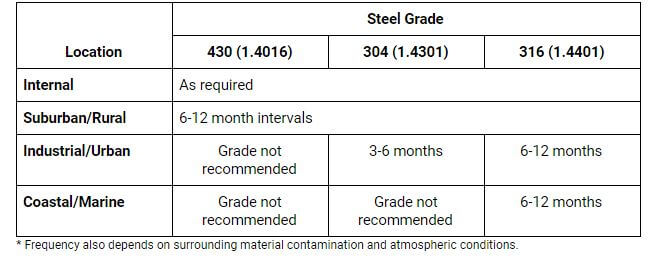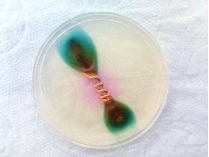Ongoing Stainless Steel Maintenance and Cleaning
Stainless steel is an ideal material for many uses, including structures, industrial equipment and commercial plants. Steel is a common choice due to its strength, and stainless steel’s excellent corrosion and staining resistance is ideal for these applications all over the world.
However, stainless steel can be susceptible to localised corrosion, or uniform corrosion if exposed to basic or acidic solutions. Some corrosion can be difficult to predict and protecting stainless steel with the proper maintenance is critical to keep the integrity of your structures or equipment.
Depending on the environment in which stainless steel is used, surface deposits can cause staining and discolouring. The correct grade, finish, maintenance and cleaning schedules are required to maintain stainless steel’s best performance.
Maintenance
Surface deposits, contamination and corrosion must be prevented to prolong the life and integrity of stainless steel. The environments and conditions stainless steel is subjected to can have a major impact on its longevity and the frequency in which maintenance works should be carried out.
Typically, more aggressive environments (such as marine equipment) prove more difficult for stainless steel to resist without the correct cleaning and maintenance. Choosing the correct maintenance schedule for stainless steel, as in the table below, and a prompt response to any stains or discolouration can aid in the prevention of serious problems with stainless steel.
Maintenance Schedule
Having stainless steel cleaned as soon as it appears dirty can help restore its original lustre. The recommended frequency of cleaning will depend on an application’s use and location.
Recommended approximate frequency for cleaning

International Corrosion Services was established in 2010 and has since been a market leader in providing products and services for cleaning, descaling, and pickling and passivation of stainless steel.
As market leaders, our team has the knowledge and experience to work with all kinds of stainless steel projects, ensuring the quality and integrity of your stainless steel is upheld with a custom cleaning and maintenance schedule that is tailored for your project.
Our expertise enables us to:
Identify the type of treatment required and develop a scope of works.
Develop site-specific treatment operating procedures in compliance with the standards.
Developing and implementing health and safety procedures (risk assessments included)
Bunding and waste capture process for collection and offsite disposal.
Quality Control of treatment [which can incorporate the use of the Forroxyl test as a means of ensuring the stainless steel is free from iron contamination.]
Issue a certificate of completion and conformity.
With over 100 years of experience in quality, health and safety, systems and processes, our established background and commitment to service mean your stainless steel experiences will be nothing short of exceptional.
To organise a customised maintenance plan, suited to your material’s ongoing maintenance, contact International Corrosion Services today.
 ICS will be closed for the Christmas and New Year period from 12pm, 22 Dec - 9 Jan 2023
ICS will be closed for the Christmas and New Year period from 12pm, 22 Dec - 9 Jan 2023




